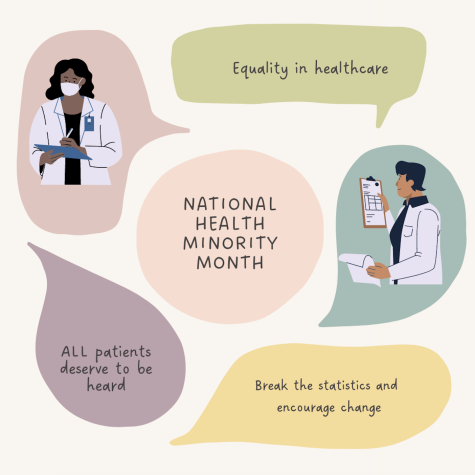Cultural Disparities Pose Barriers In Health Care
January 24, 2023
Representation in healthcare refers to the inclusion of healthcare professionals of varied races, ethnicity, gender, socioeconomic status, religion, and sexual orientation. It is important because it gives patients the opportunity to share the same or similar backgrounds as their healthcare providers. By ensuring that people of different groups are represented, healthcare employers can better navigate barriers that separate them from their patients.
Despite the recognition of the value of a diverse workforce, there remain obstacles. The challenges of under-represented groups may create additional challenges such as fewer job offers, increased risk of discrimination, disadvantaged backgrounds that affect future opportunities or even employers often not a part of these groups who may not understand the importance of diversity.
According to an article by the University of St Augustine for Health Sciences, “It’s important for employers to understand current healthcare demographics and the barriers and challenges faced by women, people of color, and LGBTQ people in the healthcare workforce.” While current demographics may have improved slightly over the centuries, there are still difficulties for underrepresented groups.
A report by The Association of American Medical Colleges in 2019 revealed that more than half of active physicians are White, 17% are Asian, 5% are Hispanic, and 5% are Black or African American. It’s clear that certain groups dominate certain areas of health. It wasn’t until 2007 that a surge in female physicians rose from only 28% to 36% and out of every 100 promoted men, only 85 women are promoted which can become an even larger difference for people of color. The representation of different races, cultures, genders, sexual orientations, and religions is essential to not only improve communication between patients and healthcare providers but within workers and facilities as well.
Fortunately, there are ways to lessen these cultural disparities. AAMC shares a few things being done to help promote diversity including “adjusting services offered to better meet the needs of the patient population,” “hiring culturally diverse staff,” and “removing the biases in policies and procedures while instituting new policies that promote equality.” By being more inclusive, healthcare policies show it can increase provider comfort levels, enhance understanding, improve communication, increase patient trust and reduce health disparities to ultimately provide an inclusive experience for patients of all demographics.
Each and every healthcare provider is a valuable member of the force, no matter their race, gender, religion, or sexual orientation. In addition, it’s important that underrepresented groups are also given equal opportunities to be rightfully represented in all areas of wellness and health.












